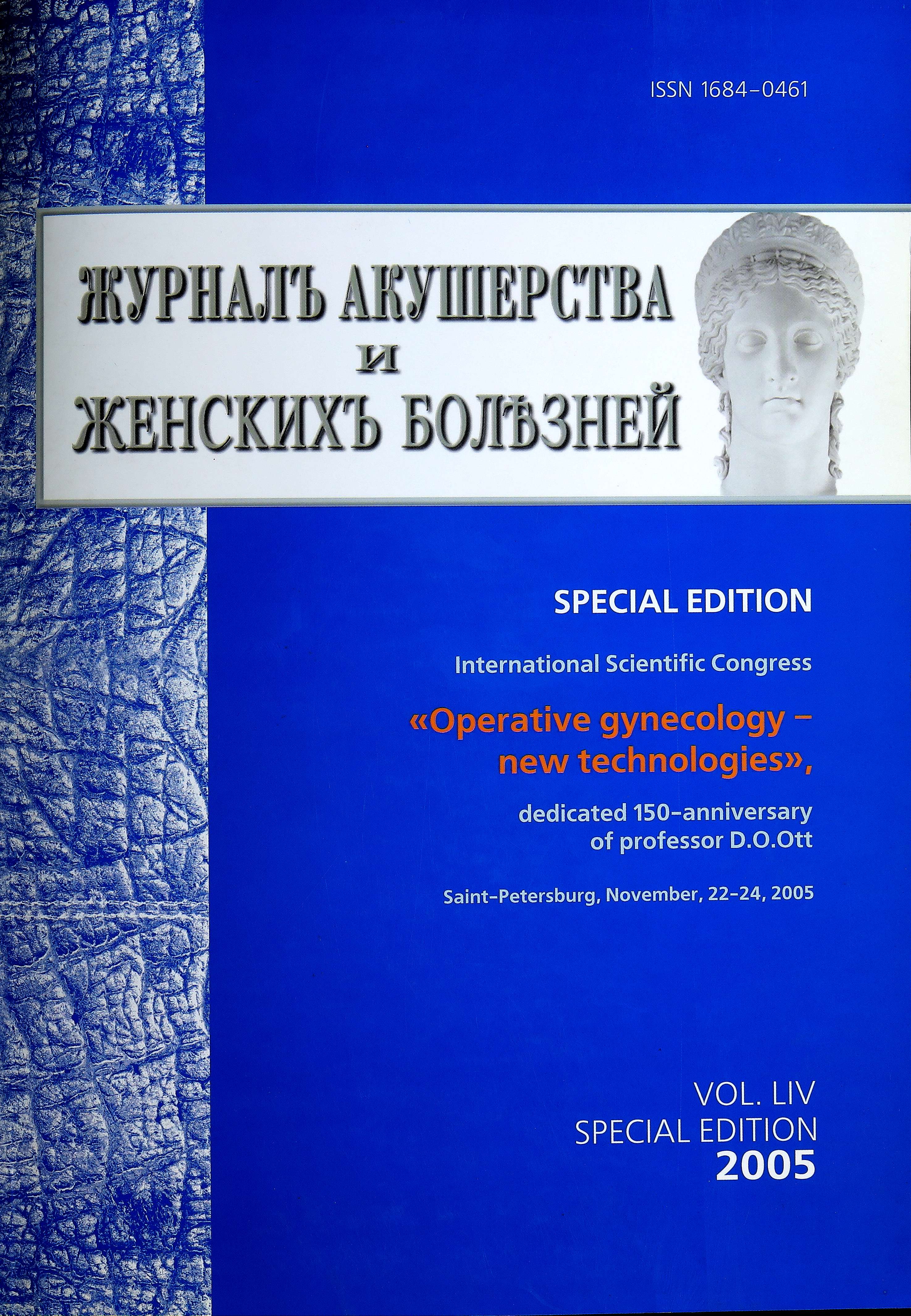The influence of the hysteroscopy over the nearer and the farther results of the endometrium cancer affected treatment
- Authors: Gabitov N.A.1, Vafina G.V.1, Gubaidullin A.R.1, Shaikhutdinova A.S.1, Garipova G.H.1
-
Affiliations:
- MUZ Oncologic hospital
- Issue: Vol 54, No 5S (2005)
- Pages: 81-82
- Section: Reviews
- Submitted: 15.11.2005
- Accepted: 11.11.2021
- Published: 15.11.2005
- URL: https://journals.eco-vector.com/jowd/article/view/87534
- DOI: https://doi.org/10.17816/JOWD87534
- ID: 87534
Cite item
Abstract
The hysteroscopy diagnostic is considered as the method of definitive diagnostic of the endometrium cancer before the operation. The hysteroscopy is worth while in cases of difficulties with the diagnostic of the diseases. It is reasonable to introduce the hysteroscopy diagnostic in the algorithm of examination of the endometrium cancer diseases.
Full Text
The objective of examination: 1. The influence of the hysteroscopy over the farther results of the endometrium cancer diseased. 2. The constatation of the possibilities of the hysteroscopy over the diagnosis of endometrium cancer (its prevalence, its concentration).
The examination methods. 1. Fluid hysteroscopy. 2. The used apparatus: Olympus (flexible/supple), K.Storz (stiff). 3. The cytological examination of the sample from the small pelvis and the abdominal cavity organs. 4. The hystological examination (using the standard procedures).
The examinated objects. The essential control group of patients. The essential group: 38 of the endometrium cancer affected from 1995 to 2001, the hysteroscopy diagnosis wasn’t used. The essential group: the age of the patients is from 42 to 85 years. The hysteroscopy was held in the fluid medium according to the standard procedure, using the hysteropump with the target biopsy of the endometrium. 37 patients are affected by the endometrium cancer in the first stage, one patient is in the third stage. The diagnosis of the endometrium cancer was disproved for 3 of 38 patients after the biopsy of the endometrium. After the surgical treatment the diagnosis of endometrium cancer was hystologically confirmed for all the patients of the first group. All the patients of the first group were operated for the extirpation of the uterus and the appendix, the chiledenictomy of the pelvis was executed, the index was- 1 patient at the 3rd stage. During the celiotomy in this group the smear on the oncocytology was taken to determinate the possibility of spread the disease after doing the hysteroscopy. Only one patient had the malignant cells. It is necessary to mention that in this case it was a papillar adenocarcinoma of the endometrium, for which the early dissemination of the process in the abdominal cavity is caracteristic. The survival in 2 groups are the same.
Results. 1. During the diagnostic hysteroscopy all the patients had the clinical diagnosis: endometrium cancer. 2. The anatomical verifications at the diagnosis stage after the constitute 91,8%. 3. The coincidence of the provisional and the definitive diagnoses in 100% of cases. 4. The influence of the hysteroscopy over the results of treatment: a) The nearer influences: The statistics of the celiotomy of the treatment after the operation doesn’t differ from the control group. b) The farther influences coincide with control group.
Conclusion.
- The hysteroscopy is a high informative method of examination over the endometrium cancer.
- The negative anatomic diagnosis over the hysteroscopic picture of the endometrium isn’t a cause to refuse the surgical treatment.
- The use of the hysteroscopy for the endometrium cancer affected patients doesn’t aggravate the results of the treatment and the survival of the patients of this group.
- The hysteroscopy permit the diagnostic of the endometrium cancer in the early stages of the disease with the topical diagnostic of the process, it effectuate the improvement of the surgical methods of the treatment, the improvement of the index of the survival in this group of patients.
- The hysteroscopy diagnostic is considered as the method of definitive diagnostic of the endometrium cancer before the operation. The hysteroscopy is worth while in cases of difficulties with the diagnostic of the diseases. It is reasonable to introduce the hysteroscopy diagnostic in the algorithm of examination of the endometrium cancer diseases.
About the authors
N. A. Gabitov
MUZ Oncologic hospital
Email: info@eco-vector.com
Russian Federation, Kazan
G. V. Vafina
MUZ Oncologic hospital
Email: info@eco-vector.com
obstetrician, gynecologist, oncologist-gynecologist
Russian Federation, KazanA. R. Gubaidullin
MUZ Oncologic hospital
Email: info@eco-vector.com
Gynecologist
Russian Federation, KazanA. S. Shaikhutdinova
MUZ Oncologic hospital
Email: info@eco-vector.com
Gynecologist
Russian Federation, KazanG. H. Garipova
MUZ Oncologic hospital
Author for correspondence.
Email: info@eco-vector.com
oncologist-gynecologist, surgeon
Russian Federation, KazanReferences
Supplementary files







